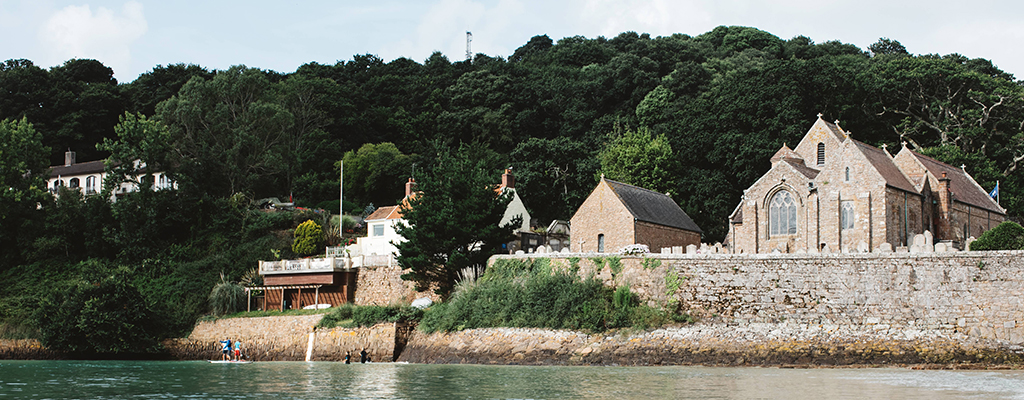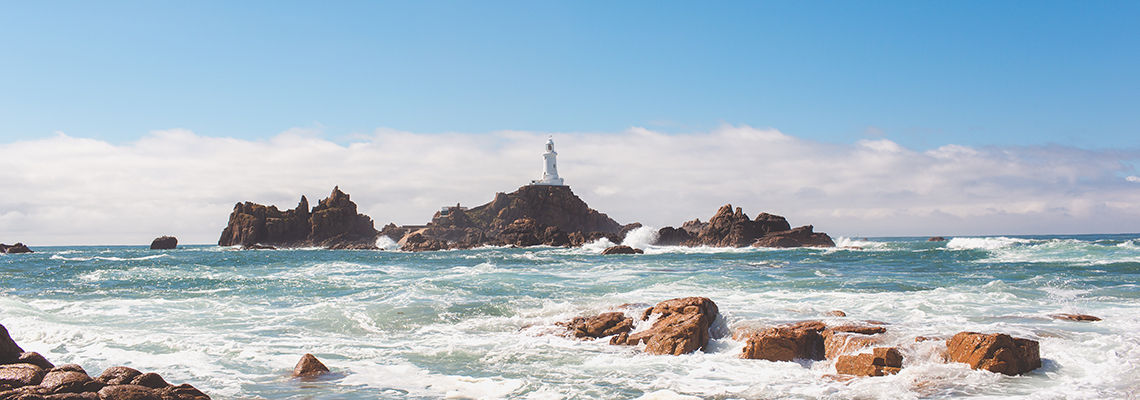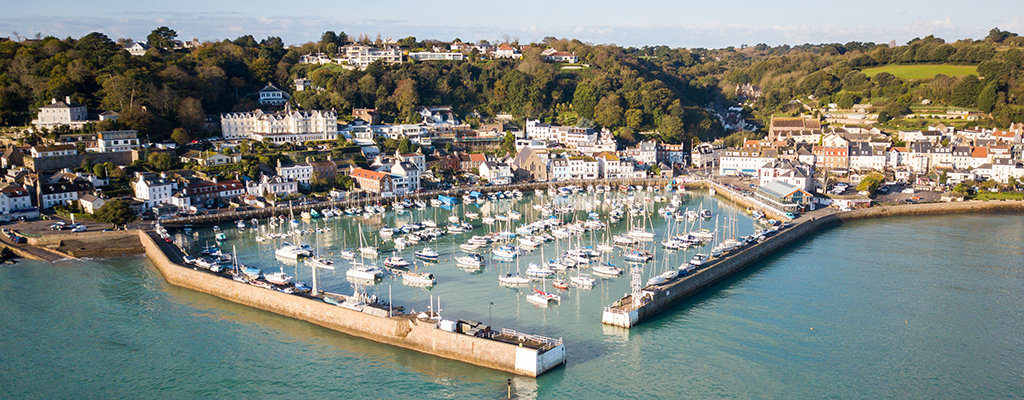While you don’t need us to tell you that we find ourselves in very strange times. With the current global situation, we have found ourselves in a very nostalgic mood – dreaming of sandy beaches, gently lapping waters and the natural beauty that can be found on Jersey holidays.
With this in mind, local historian and walking guide Pete Webb has kindly put pen to paper to take us on a virtual journey around one of his favourite places in Jersey – the parish of St Brelade:
The blue, glittering sea blows you away with its beauty, as you arrive on the Beach Bus from St. Helier; an open-top double-decker doubles the pleasure. The golden sandy beach embraced by cliffs invites you to twiddle your toes in the silky soft sand. Happiness abounds as the young at heart board a banana boat for an adrenalin rush riding the waves, or just relax on the super sunbeds or deck chairs on the valeted sandy beach, they even supply ashtrays to keep the sand pristine. Sun-bronzed beach guards watch over your surf and sea fun; and on the promenade, a fine selection of restaurants to sample fresh Jersey produce from field to plate – oh, to be spoilt.
Fisherman’s Chapel and Church
St. Helier and St. Brelade were two evangelists arriving in Jersey in the 6th century. St. Brelade built a tiny chapel; today, it is the Fisherman’s Chapel next to the Church. The current chapel was built after the main church, both built of Jersey granite; the church’s internal granite is exposed to view-enhancing the beautiful stained-glass windows by a Jersey artist, Henri Bosdet.

Many weddings take place in this fairy tale church, and the floral displays often overflow from the church. By the main gate is a remembrance plaque: 337 German personnel were buried in the churchyard from the first and second World Wars. They were reinterred in a new cemetery in 1963 at Huisnes sur Mer, near St. Malo.
Noirmont Point

Noirmont Point’s venue has good parking with an envious seascape capturing your attention from this 200-foot cliff top. Jersey’s Occupation Society have a superbly refurbished German command bunker; check opening times with Jersey Tourism (01534 859000). The eastern side has exciting views across St. Aubin’s Bay, where Queen Victoria, in 1846 commented that St. Aubin’s Bay reminded her of the Bay of Naples. Across the beautiful bay, St. Helier is seen in good detail, too. On the western side of the headland, view one of Jersey’s prettiest bays, Portelet Bay. The centre rock in the bay carries the first Martello Tower to be built in Jersey 1807/08. Access to the bay is near to the Portelet Inn Bars – now there’s an invitation for you.
La Corbiere
As you approach La Corbiere the long straight road brings the tip of the lighthouse into your view; it was built in 1874. Drive slowly here to allow the opening panorama to overwhelm you – it is really handsome; you are now looking out to the Atlantic Ocean. Following the curved latitude west, you would arrive at Newfoundland. Pan the sea to your right and you will view the outline of Guernsey; the next island to the right is Jethou and behind it, you can just make out Herm. The bold outline is of Sark is very clear – all islands lying from 11 to 22 miles from Jersey.
The long 3-mile sandy bay to your right is St. Ouen’s Bay, a surfer’s paradise mostly in the parish of St. Ouen.

St. Aubin
St. Brelade’s Parish sits on 600-million-year-old pink granite; St. Aubin, sits on shale. The picturesque harbour was the main harbour of Jersey before St. Helier’s. This harbour and its haven generated vast amounts of money trading in the cod industry off Newfoundland and the Caribbean Islands. At the far end of the harbour are the Old Court House bars and restaurant – used for filming the famous ‘Bergerac’ series it was named ‘The Royal Barge’.

Opposite, on the quay, a stone memorial of the Canadian Gaspé Peninsula where Jersey fishermen made a lifestyle and wealth from the cod fishing that peeked at the start of the 19th century. Many buildings in St. Aubin are built from local pink granite. Also, a quarry in St. Brelade’s Bay was formed to supply granite for the Houses of Parliament in 1840 after the damage by fire. Another St Brelade’s quarry, that now contains our desalination water plant, was opened for its quality granite that was sold to London to build the Victoria Embankment.




